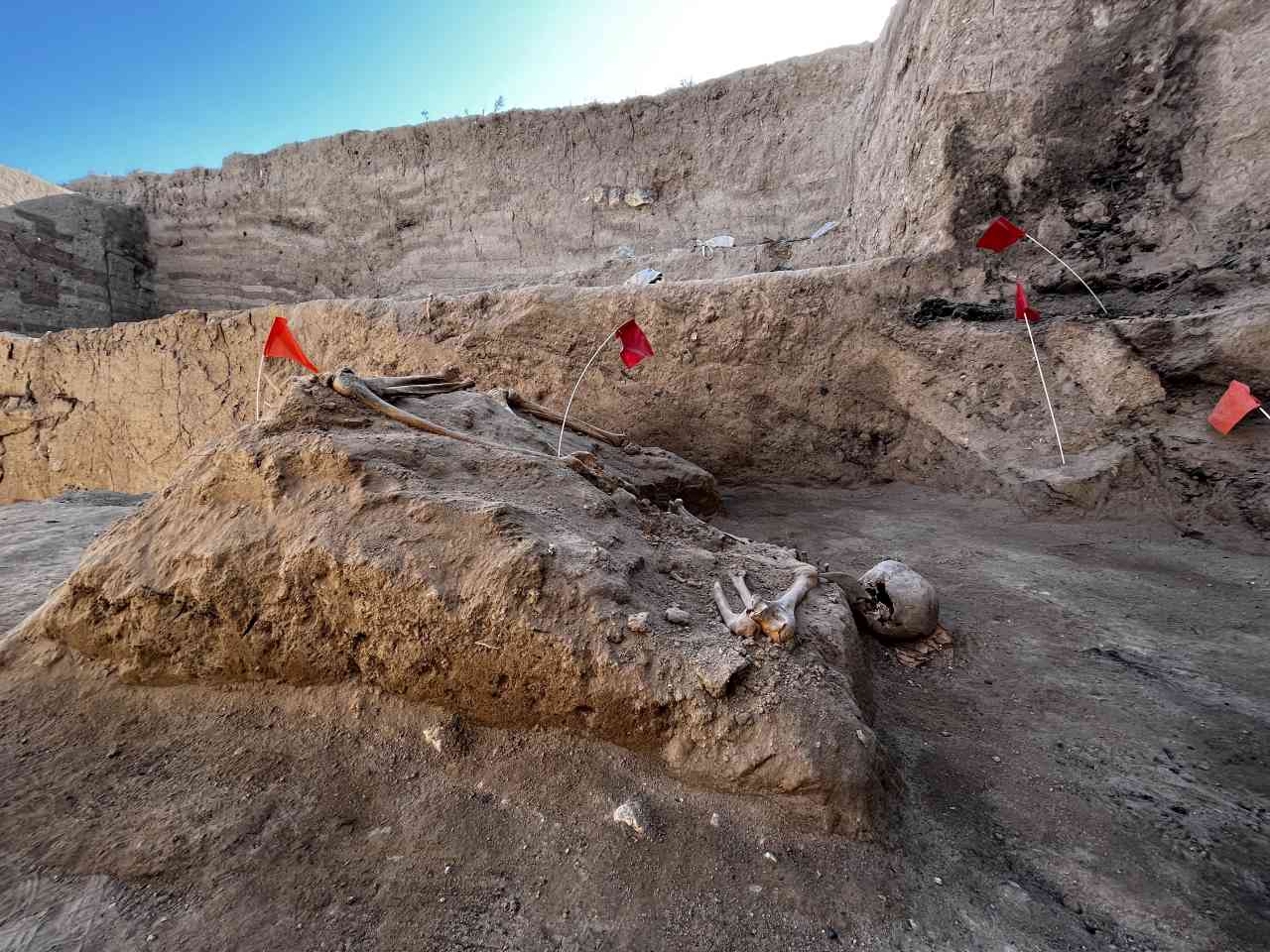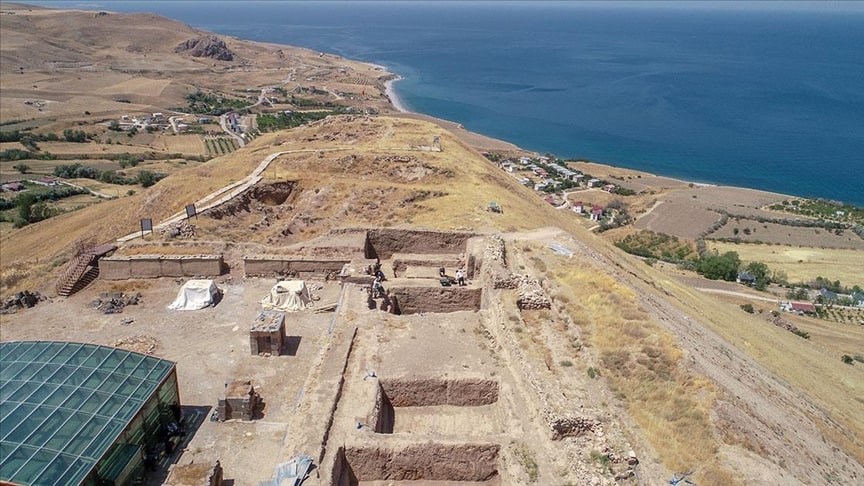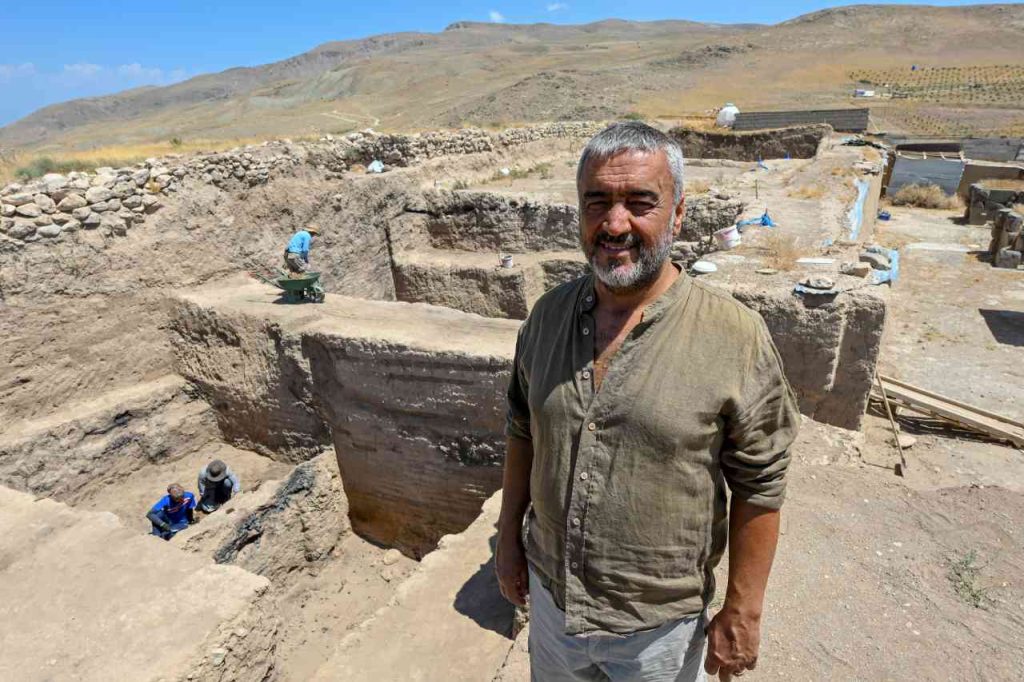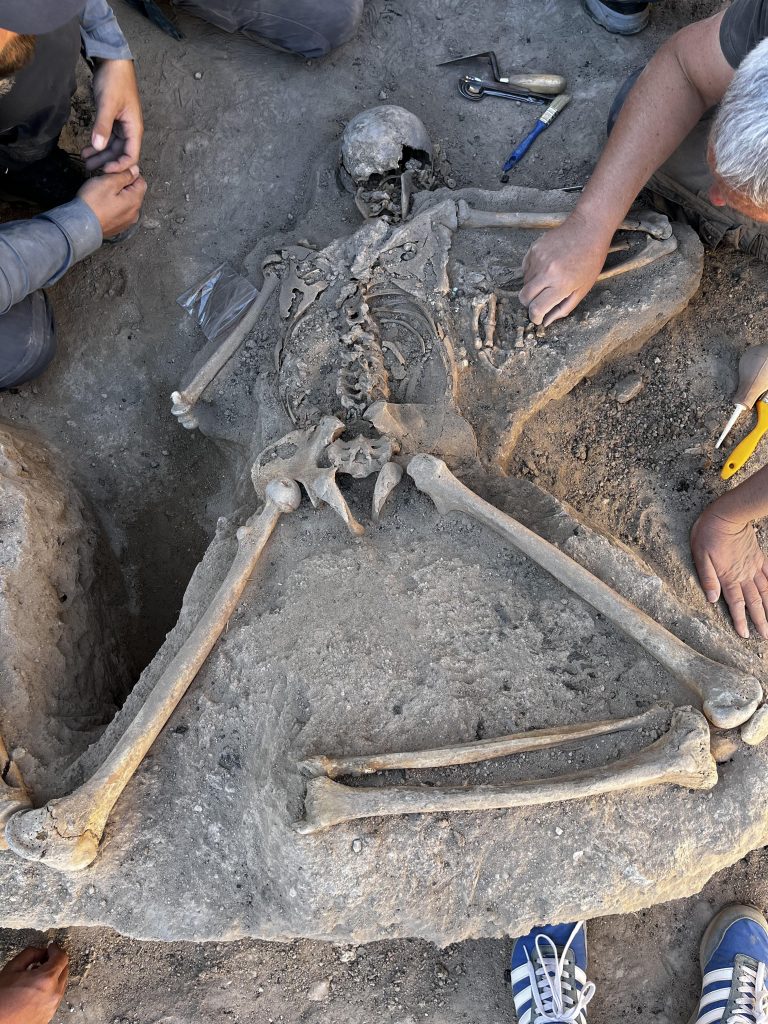
A skeleton of an Urartian man with partially preserved brain tissue was found in Ayanis Castle
During the excavations of the Urartian period Ayanis Castle located on the shores of Lake Van in the Eastern Anatolia region of Turkey, a skeleton belonging to a Urartian man was found, with partially preserved brain tissue.
In this year’s phase of the ongoing excavation efforts that have been carried out for 36 years at Ayanis Castle, built on a hill overlooking Lake Van by Urartian King II. Rusa, a new complex consisting of 4 rooms, believed to be connected to the temple section, has been discovered. Additionally, for the first time, a human skeleton was unearthed.
The excavations at Ayanis, one of the most magnificent structures built by the Urartians 2700 years ago, are being conducted under the leadership of Prof. Dr. Mehmet Işıklı, a faculty member of the Department of Archaeology at Atatürk University.

For the first time, an archaeological discovery was made in the structure complex believed to have been used by the ruling class of the Urartians. An intact human skeleton was found adorned with ornaments such as necklaces, bracelets, and earrings.
With the findings set to be analyzed by anthropologists in the laboratory, it is anticipated that new insights into the Urartian period at the fortress will be gained, contributing to our understanding of the era.
Prof. Dr. Mehmet Işıklı, mentioning the architectural features of a newly discovered structure complex resembling the Haldi Temple area to the north of the fortress, stated:

“These northern areas are truly significant. The excavation in this area is quite challenging due to the monumental architecture we are facing. We have reached a depth of about 6 meters. Rich assemblages of artifacts are greeting us. We know that there are 4 major spaces, which might even increase to 5. Understanding their function isn’t easy. The first space revealed very important findings. Last year, we uncovered a bronze plate and a uniquely designed wheeled chariot in these areas. This year, we encountered an even more exciting discovery. The prevailing assumption was that there might have been earthquakes or attacks within the fortress. Until now, no human remains had been found inside the fortress. We hadn’t come across any trace of human bones. This marks the first instance of finding a human skeleton in well-preserved condition. We are talking about the skeleton of a young adult.”

Işıklı said “The skeleton will be examined in a laboratory environment. We will conduct studies on the skeleton. One of the most remarkable aspects is that part of the brain tissue has been partially preserved. The skull is positioned downwards, and due to the fractured skull, we could see parts of the brain. This excited the anthropologists greatly. In the near future, we will gather information about how and why the owner of this skeleton died. Some findings related to the skeleton have also emerged. Pieces of earrings, beads, necklace fragments, arrowheads, and a considerable amount of pottery and ceramics were found. The nature of the findings suggests that this area was likely used by priests or the elite class, possibly within the temple context. An inscription was also uncovered. We will analyze the preserved 6-7 lines of the inscription. It will provide us with significant clues.”
This meticulous examination of the skeleton and the associated artifacts promises to shed light on various aspects of the individual’s life, the society they lived in, and potentially even offer insights into the practices and beliefs of the Urartian culture.
Cover Photo AA
You may also like
- A 1700-year-old statue of Pan unearthed during the excavations at Polyeuktos in İstanbul
- The granary was found in the ancient city of Sebaste, founded by the first Roman emperor Augustus
- Donalar Kale Kapı Rock Tomb or Donalar Rock Tomb
- Theater emerges as works continue in ancient city of Perinthos
- Urartian King Argishti’s bronze shield revealed the name of an unknown country
- The religious center of Lycia, the ancient city of Letoon
- Who were the Luwians?
- A new study brings a fresh perspective on the Anatolian origin of the Indo-European languages
- Perhaps the oldest thermal treatment center in the world, which has been in continuous use for 2000 years -Basilica Therma Roman Bath or King’s Daughter-
- The largest synagogue of the ancient world, located in the ancient city of Sardis, is being restored











Leave a Reply